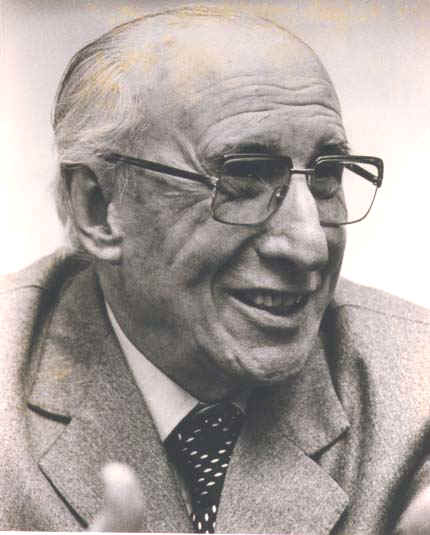Timetable
| Monday | Tuesday | Wednesday | Thursday | Friday | |
| 9:00 - 11:00 | Perthame | Slepcev | Hairer | Stevens | Stevens |
| 11:00 - 11:30 | Coffee break | Coffee break | Coffee break | Coffee break | Coffee break |
| 11:30 - 12:30 | Niethammer | Hairer | Xue-Mei Li | Open problem session | Carrillo |
| 12:30 - 13:30 | Pavliotis | Hairer | Bonforte | Open problem session | Vázquez |
| 13:30 - 15:00 | Lunch break | Lunch break | Lunch break | ||
| 15:00 - 16:00 | Slepcev | Perthame | Cañizo | ||
| 16:00 - 17:00 | Slepcev | Perthame | Luckhaus | ||
| 17:00 - 18:00 | Poster session |
You can find below the available information regarding the long courses, the one-hour talks, and the posters to be presented at the poster session on Tuesday afternoon. Links to the slides of the talks can be found before each speaker's abstract.
Courses
Martin Hairer (Imperial College London, UK)
The BPHZ theorem for stochastic PDEs
Benoît Perthame
(Université Pierre et Marie Curie,
France)
PDEs for neural networks:
analysis, simulations and behaviour
Slides here: [First] [Second] [Third] [Fourth]
Neurons exchange information via discharges, propagated by membrane
potential, which trigger firing of the many connected neurons. How to
describe large networks of such neurons? What are the properties of
these mean-field equations? How can such a network generate a
spontaneous activity? Such questions can be tackled using nonlinear
integro-differential equations. These are now classically used in the
neuroscience community to describe neuronal networks or neural
assemblies. Among them, the best known is certainly Wilson-Cowan's
equation which describe spiking rates arising in different brain
locations.
Another classical model is the integrate-and-fire
equation that describes neurons through their voltage using a
particular type of Fokker-Planck equations. Several mathematical
results will be presented concerning existence, blow-up, convergence
to steady state, for the excitatory and inhibitory neurons, with or
without refractory states. Conditions for the transition to
spontaneous activity (periodic solutions) will be discussed.
One
can also describe directly the spike time distribution which seems to
encode more directly the neuronal information. This leads to a
structured population equation that describes at time $t$ the
probability to find a neuron with time $s$ elapsed since its last
discharge. Here, we can show that small or large connectivity leads to
desynchronization. For intermediate regimes, sustained periodic
activity occurs. A common mathematical tool is the use of the
relative entropy method.
This talk is based on works with
K. Pakdaman and D. Salort, M. Cáceres, J. A. Carrillo, D. Smets and
G. Wainrib.
- The single neuron, slow-fast dynamics
- The Integrate-and-Fire model, role of noise
- Analysis of I&F model
- Time elapsed models
Dejan Slepčev (Carnegie Mellon University, US)
Variational problems on random structures:
analysis and applications to data science
The lectures will focus on variational problems that arise in data analysis and machine learning. Modern data-acquisition techniques produce a wealth of data about the world we live in. Extracting the information from the data leads to machine learning/statistics tasks such as clustering, classification, regression, dimensionality reduction, and others. Many of these tasks seek to minimize a functional, defined on the available random sample, which specifies the desired properties of the object sought. The lectures will discuss a mathematical framework suitable for studies of asymptotic properties of such, variational, problems posed on random samples and related random geometries (e.g. proximity graphs). In particular we will discuss the passage from discrete variational problems on random samples to continuum limits. The lectures will introduce the basic elements of the background material on calculus of variations and optimal transportation. They will also explain the motivation for the studies of the given functionals and their significance to machine learning. Finally the asymptotic consistency of several important machine learning algorithms will be shown.
Angela Stevens (Universität Münster, Germany)
Partial differential equations and interacting stochastic many-particle models for self-attraction and self-organization in
biology
- Moderately interacting stochastic many particle systems.
For many moderately interacting particles,
which are attracted by self-produced, diffusing molecules
a limiting system of partial differential equations is derived.
This system is of chemotaxis resp. Keller-Segel type.
Such limits can be derived for a large class of problem.
Oelschläger, Karl. On the derivation of reaction-diffusion equations as limit dynamics of systems of moderately interacting stochastic processes. Probab. Theory Related Fields 82 (1989), no. 4, 565–586.
Stevens, Angela The derivation of chemotaxis equations as limit dynamics of moderately interacting stochastic many-particle systems. SIAM J. Appl. Math. 61 (2000), no. 1, 183–212.
Stevens, Angela Erratum: "The derivation of chemotaxis equations as limit dynamics of moderately interacting stochastic many-particle systems'' [SIAM J. Appl. Math. 61 (2000), no. 1, 183–212]. - A PDE-ODE system and its connection to reinforced random walks.
Formally, one can approximate a single particle self-attracting
reinforced random walk by a PDE-ODE system, but important
correlations are missed. The PDE-ODE system can be classified
w.r.t. its long time behavior, i.e. existence of global solutions
or (finite time) blowup. Surprisingly, some of these results relate
to recurrence and trapping results known for the single particle
random walk. This will be discussed in detail.
Kang, Kyungkeun; Stevens, Angela; Velázquez, Juan J. L. Qualitative behavior of a Keller-Segel model with non-diffusive memory. Comm. Partial Differential Equations 35 (2010), no. 2, 245–274.
Othmer, Hans G.; Stevens, Angela Aggregation, blowup, and collapse: the ABCs of taxis in reinforced random walks. SIAM J. Appl. Math. 57 (1997), no. 4, 1044–1081. - A hydrodynamic limit for chemotaxis in heterogeneous environments.
The first equation within a class of Keller-Segel resp. chemotaxis systems
is derived as a hydrodynamic limit from a stochastic interacting particle
system on the lattice. The "cells" interact with attractive chemical
molecules
on a finite number of lattice sites, but they interact directly among
themselves only on the same lattice site. The chemical environment is
assumed
to be stationary with a slowly varying mean. If time permits, also the
limiting
system is discussed w.r.t. its qualitative behavior.
Grosskinsky, Stefan; Marahrens, Daniel; Stevens, Angela A hydrodynamic limit for chemotaxis in a given heterogeneous environment. Vietnam J. Math. 45 (2017), no. 1-2, 127–152.
Koukkous, A. Hydrodynamic behavior of symmetric zero-range processes with random rates. Stochastic Process. Appl. 84 (1999), no. 2, 297–312.
Schaaf, Renate Stationary solutions of chemotaxis systems. Trans. Amer. Math. Soc. 292 (1985), no. 2, 531–556.
Talks
Matteo Bonforte
(Universidad Autónoma de Madrid, Spain)
Nonlinear and Nonlocal Degenerate Diffusions on Bounded Domains
We study quantitative properties of nonnegative solutions to a nonlinear and nonlocal diffusion equation posed in a bounded domain, with appropriate homogeneous Dirichlet boundary conditions. The diffusion is driven by a linear operator in a quite general class, that includes the three most common versions of the fractional Laplacians on a bounded domain with zero Dirichlet boundary conditions, as well as many other examples. The nonlinearity is allowed to be degenerate, the prototype being $|u|^{m-1}u$, with $m>1$. We will shortly present some recent results about existence, uniqueness and a priori estimates for a quite large class of very weak solutions, that we call weak dual solutions. Then we will concentrate on the regularity theory: decay and positivity, boundary behavior, Harnack inequalities, interior and boundary regularity, and asymptotic behavior. All this is done in a quantitative way, based on sharp a priori estimates. Although our focus is on the fractional models, our techniques cover also the local case $s = 1$ and provide new results even in this setting. A surprising instance of this problem is the possible presence of nonmatching powers for the boundary behavior: this unexpected phenomenon is a completely new feature of the nonlocal nonlinear structure of this model, and it is not present in the semilinear elliptic case, for which we will shortly present the most recent results. The above results are contained on a series of recent papers in collaboration with A. Figalli, Y. Sire, X. Ros-Oton and J. L. Vázquez.
José
A. Cañizo
(Universidad de Granada, Spain)
The Harris-Meyn-Tweedie theorem in PDEs and kinetic theory
We will give a short overview of the Harris, or Harris-Meyn-Tweedie theorem from probability, and present a short recent proof which is well adapted to linear problems in partial differential equations, especially when integral terms are present. We will show some particular applications to the study of the speed of convergence to equilibrium, particularly for the growth-fragmentation equation and some simple models in kinetic theory.
José A. Carrillo
(Imperial College London, UK)
TBA
Xue-Mei Li
(Imperial College London, UK)
Hessian estimates for Schrödinger equations
We study solutions of second order parabolic equation with a potential and their derivatives.
Stephan Luckhaus
(Leipzig University, Germany)
Dislocations as finite size singularities and rigidity estimates
Barbara Niethammer
(Universität Bonn, Germany)
Self-similarity in Smoluchowski's coagulation equation
Smoluchowski's classical mean-field model for coagulation is used to describe cluster formation and growth in a large variety of applications. A question of particular relevance is the so-called scaling hypothesis, which suggests that the long-time behaviour is universal and described by self-similar solutions or traveling waves respectively. This issue is well understood for some exactly solvable cases, but in the general case many questions are still completely open. I will give an overview of the results that have been obtained in the last decade and explain why we expect that the scaling hypothesis is not true in general.
Grigorios Pavliotis
(Imperial College London, UK)
Long time behaviour and phase transitions for the McKean-
Vlasov equation
We study the long time behaviour and the number and structure of stationary solutions for the McKean-Vlasov equation, a nonlinear nonlocal Fokker- Planck type equation that describes the mean field limit of a system of weakly interacting diffusions. We consider two cases: the McKean-Vlasov equation in a multiscale confining potential with quadratic, Curie-Weiss, interaction (the so-called Dasai-Zwanzig model), and the McKean-Vlasov dynamics on the torus with periodic boundary conditions and with a localized interaction. Our main objectives are the study of convergence to a stationary state and the construction of the bifurcation diagram for the stationary problem. The application of our work to the study of models for opinion formation is also discussed.
Juan Luis Vázquez
(Universidad Autónoma de Madrid, Spain)
Degenerate Fractional Diffusion Equations. A review.
The talk presents work on the existence and behaviour of solutions of nonlinear fractional elliptic and parabolic equations, mainly when posed in bounded domains. General reference: JLV, "The mathematical theories of diffusion. Nonlinear and fractional diffusion", in "Nonlocal and Nonlinear Diffusions and Interactions: New Methods and Directions", Springer Lecture Notes in Mathematics, C.I.M.E. Foundation Subseries. arXiv:1706.08241 [math.AP].
Posters
These posters will be presented during the poster session to take place on Tuesday afternoon. If you wish to present a poster, please write to the organisers with a proposed title.
Alessandro Audrito. The influence of slow and fast nonlinear diffusion in the long time behaviour of solutions to a Fisher-KPP initial value problem
Fatima Aqel. Decay properties of approximate solutions for the damped semilinear wave equation on a bounded 1d domain
Esther Daus. About the entropic structure of detailed balanced multi-species cross-diffusion equations
Antonio Esposito & Markus Schmidtchen. Systems of PDEs with Nonlocal Newtonian Interactions in 1D
Gianluca Favre. Hypocoercivity for Kinetic-Reaction Equation
Megan Griffin-Pickering. From Particles to the Kinetic Isothermal Euler Equation
David Gómez Castro. The fractional Schrödinger equation with singular potential on a bounded domain
Rishabh Gvalani. Phase transitions for the McKean--Vlasov equation on the torus
Yahya Jaafra. Multiple large-time behavior of nonlocal interaction equations with quadratic diffusion
Sergio Pérez. Well-balanced finite volume schemes for hydrodynamic systems with general free energy
Bảo Quốc Tăng. Trend to equilibrium for chemically reacting flows
Sebastian Throm. Self-similar profiles with fat tails for Smoluchowski's coagulation equation
Benjamin Virrion. Fast Computation of Historical Expected Shortfall by Ranking and Selection of Worst Scenarios
Tobias Wöhrer. Sharp decay estimates in defective evolution equations with uncertainty
Havva Yoldaş. Asymptotic behavior of neuron population models structured by elapsed-time


